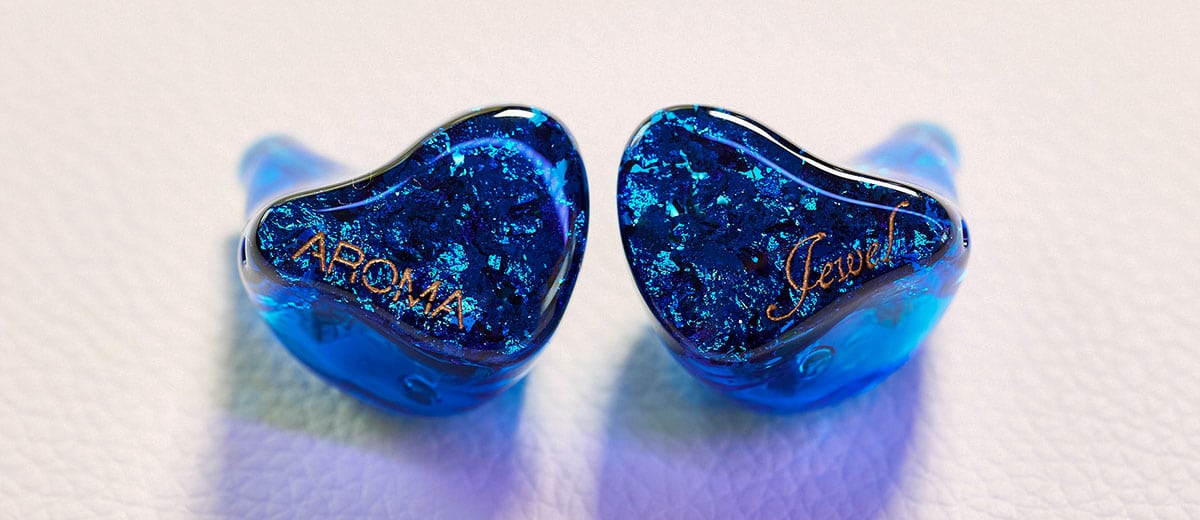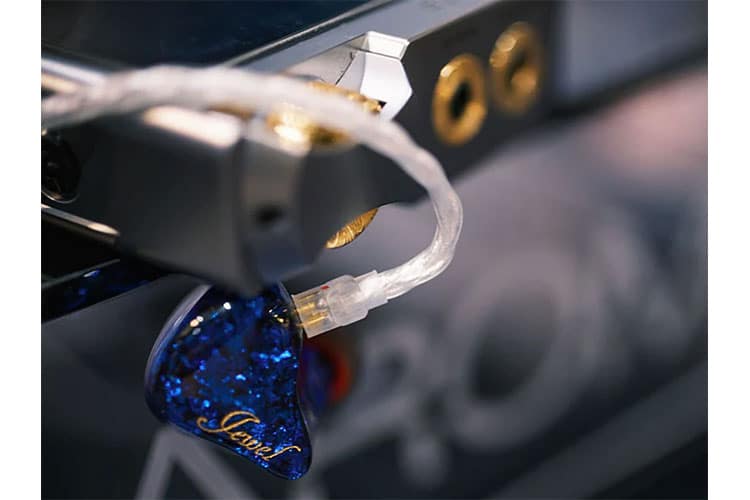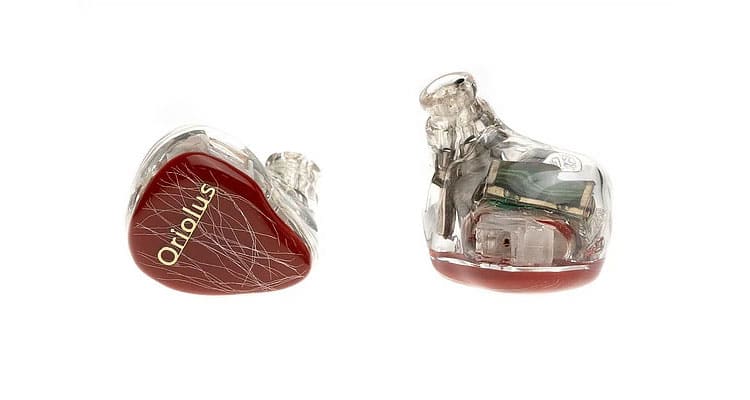Synergy
Efficiency
The Jewel is relatively easy to drive on paper coming in with an impedance rating of 22 ohms and a sensitivity level of 103db SPL.
Given the Jewel has 13 drivers in total with 1 of them being dynamic and 6 of them electrostatic, it does benefit from additional power as most EST IEMs seem to do. Hence, with DAPs such as the Cayin N8ii, this was a noticeably better pairing due to its P+ mode which allowed it to pump more juice into the Jewel thus producing a better overall sound.
USB-C dongles such as the Cayin RU6 also worked well and there was no hissing or background noise whilst the IEMs were in use with any sources during testing.
Pairings
The Jewel paired well with all sources thrown at it during testing however its peak level of performance was achieved when connected to a neutral DAP or source. This is because, without any further coloration, the bass and midrange were able to perform at their full potential.
Thus, the Cayin N8ii was the most suitable source and best pairing. The pairing of the Jewel and Cayin RU6, which tends to be quite warm, was an enjoyable pairing as the RU6 allowed the Jewel to maintain its well-textured mid-bass, highly resolving midrange and wide soundstage.
Select Comparisons
Oriolus Traillii
$6,600
Technical
The Oriolus Traillii features 4 electrostatic drivers and 8 balanced armatures giving it a total of 12 drivers. Here, the total driver count is one less compared to the Jewel in addition to the composition being different.
The Traillii features electrostatics and balanced armature drivers only whereas the Jewel has a tribrid setup that includes a dynamic driver. The Traillii has an impedance rating of 21Ω and a sensitivity of 112 dB.
Design
The Traillii has a simpler design that is not as flashy as the Jewel. Each IEM shell is made from a clear photopolymer which is topped off with a red face plate.
On the faceplate, the words “Oriolus” are written in gold letters which sit atop a series of vertical lines depicting a bird’s (i.e., Traillii’s) nest. The size of the Traillii’s IEM shells is much smaller, compact, and lightweight compared to the Jewel’s. Furthermore, the nozzle is shorter and wider on the Traillii.
Although it is on the thicker side of things, the stock cable provided is of excellent quality and one that is suitable for a summit-level IEM. It feels more robust and better made compared to Jewel’s stock cable.
The Traillii comes paired with a custom-made PW Audio cable which is based on PW Audio’s 1960s 4-wire cable.
Performance
One can hear the difference between the two IEMs when it comes to the bass response which is due to the lack of a dynamic driver in the Traillii.
Supported by balanced armatures only, the sub-bass on the Traillii is subtle and provides just enough foundation to the sound signature. On the Jewel, the sub-bass is much more extended with extra rumble.
The mid-bass on the Traillii is not as far forward and comes off as punchier and fast to decay. The Jewel’s mid-bass is more forward in the overall sound signature with more presence and slam.
The midrange on the Traillii is outstanding and presented in such a high level of detail and clarity. Both present their midrange with similar resolution however the Traillii’s upper midrange is noticeably more forward and with less warmth.
Although Jewel’s midrange is quite forward it is not as far forward as the Traillii’s. The Traillii’s tuning shies away from the mid-bass to let the lower midrange become more pronounced.
The Traillii treble has a brighter tone with more sparkle. It is more forward or noticeable in the overall sound signature compared to the Jewel. Both have an outstanding extension and can pick out and comparably highlight micro details.
The Traillii’s soundstage is very wide and tall however Jewel’s soundstage is taller with a similar width.
Imaging and layering are excellent on the Traillii however the Jewel can create more air and space between instruments and vocals thus providing an even more encapsulating listening experience.
Empire Ears Odin
$3,399
Technical
The Empire Ears Odin is one of the most technical IEMs out there with 11 drivers, 2 dynamic drivers (Weapon 9+), 5 balanced armatures, and 4 electrostatic drivers.
The Odin and Jewel have a similar tribrid design with the Jewel including one extra balanced armature and two electrostatic drivers at the expense of one less dynamic driver. The Odin has a lower impedance of 3Ω and a sensitivity rating of 108dB SPL.
Design
The Empire Ears Odin is known for its colorful and flashy looks. Its IEM shells are constructed from a jet-black resin shell. However, the overall size of Odin’s shell is smaller compared to the Jewel.
The Odin comes with its unique Bifröst faceplate depicting the rainbow bridge between Midgard and Asgard which is part of Norse mythology. This gives the Odin its distinct flair and colorful theme which contrasts with Jewel’s simple yet elegant appearance.
The Odin comes equipped with a bespoke cable of its own called the Stormbreaker which is a 2-wire, OCC Copper Litz cable with variable wire gauging (24 AWG and 26 AWG).
The Stormbreaker, which is based on a PW Audio 1960s 2-wire cable, has a higher quality and finish to it over Jewel’s stock cable and is fitted with a thick nylon jacket that is soft and supple.
Performance
The Odin and Jewel are similar in the way that they both have a slightly boosted mid-bass with the ability to find a unique balance between bass quantity and quality.
The sub-bass on Odin aims to extend deep and rumble when called upon in varying levels. Within the mid-bass, this is slightly forward and elevated on the Odin which is like the Jewel.
Both the Jewel and Odin execute their mid-bass control exquisitely and present it in a highly resolving manner with excellent detail and texture.
The Mid-bass punch on both the Jewel and Odin are similar, however, the Odin is slightly punchier, has better texture, and is faster to decay. Within the midrange, the more noticeable differences appear.
The lower midrange on the Jewel is more forward. Vocals and instruments at the lower end take center stage instead of those within the upper midrange. The upper midrange on the Odin is the focal point of its sound signature and is presented in a much more forward manner.
This means that the upper midrange on the Odin is more pronounced. Neither the Jewel nor Odin’s upper midrange is harsh however the Odin can sound brighter, especially with its treble tuning.
The treble region also represents a noticeable difference between the two and is brighter with more sparkle on the Odin. Treble extension, detail, and clarity on the Odin are excellent and similar to that of the Jewel.
The soundstage on the Odin is similarly wide and tall. However, the Jewel has slightly better imaging as it is able to provide more space between instruments and vocals.
Our Verdict
There is no doubt that the Aroma Audio Jewel is a gem. Not just because of how it looks but concerning its ability to produce a highly resolving and coherent listening experience with precision.
Precision in how it delivers its crystal-clear midrange, impeccable imaging and layering, and overall coherency across all sound frequencies.
If you can look past the mediocre stock cable, then this is an IEM that finds its place amongst the other current greats at the IEM summit.
Aroma Audio Jewel Specifications
- Configuration: 13 DD/BA/EST universal headphones
- Ultra-low range: 1DD, mid-low range: 4BA, high range: 2BA, ultra-high range: 6EST
- Sensitivity: 103dB SPL / mW
- Impedance: 22 ohms
- Frequency characteristic: 10-22kHz






